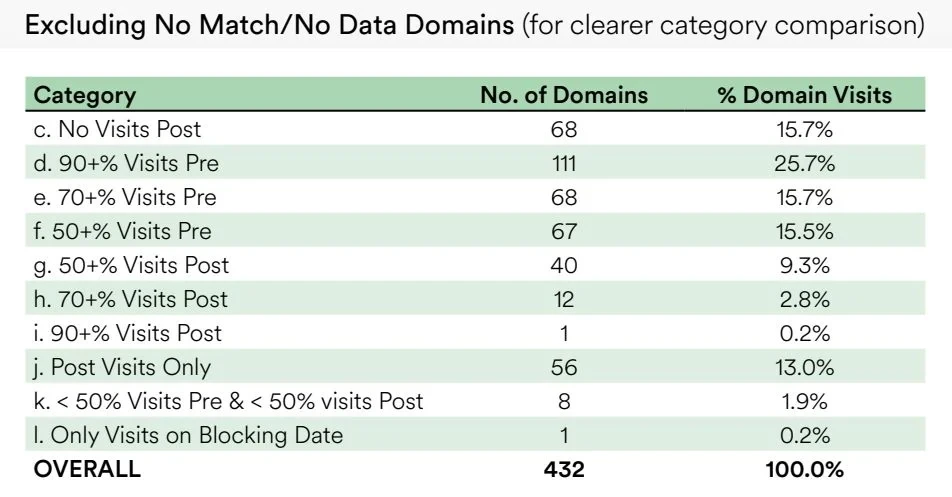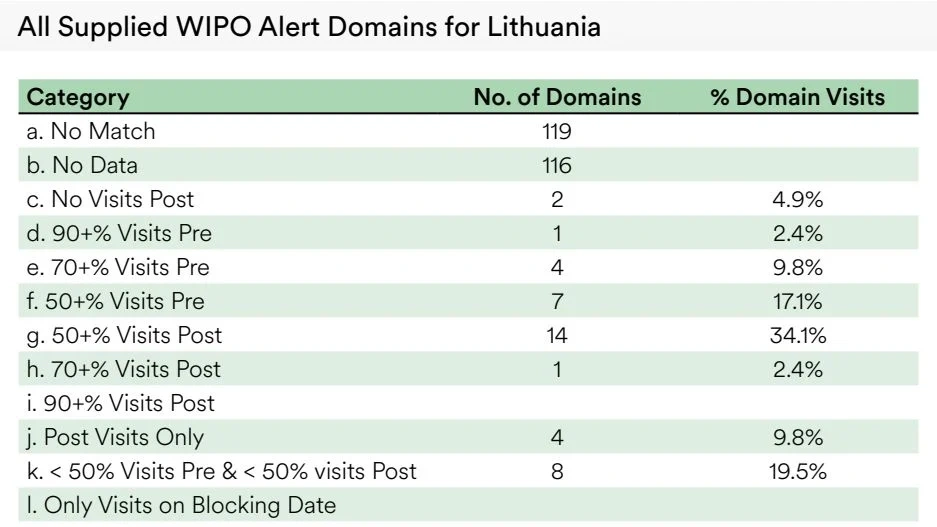Research shows impact on visits to Pirate sites after being blocked

It was supposed to reduce the number of visits to pirate sites after they were blocked, right? However, new research based on data provided by WIPO and funded by the Republic of Korea suggests otherwise.
Research shows impact on visits to Pirate sites after being blocked
Approximately a quarter of all domains for which data was available received more visits after being blocked. In recent years, website blocking has become one of the most used anti-piracy mechanisms in the world.
ISPs in several dozen countries block subscribers from accessing a variety of pirated sites. Although new blocks are added every month, research into the effectiveness of these efforts is quite limited.
One of the first academic surveys, based on data from the United Kingdom, showed that the local blockade of the Pirate Bay had little effect on legal consumption. Instead, people have turned to alternative pirate sites, proxies or VPNs to bypass virtual restrictions.

A follow-up study added more color and brought hope to rights holders. Research has shown that after a large number of websites were blocked in the UK, overall pirate website traffic decreased.
At the same time, researchers saw an increase in traffic to services like Netflix. There have also been several reports suggesting that traffic to domains has decreased after the blocks were implemented.
However, new research published by the World Intellectual Property Organization (WIPO) suggests just the opposite. WIPO has an interest in the effectiveness of website blocking as it organizes and maintains the WIPO alerts database.
This initiative gathers information about blocked domains in several participating countries, which include Spain, Greece, Italy, Korea, Peru, Lithuania and Russia.
This online blocking repository can be used by various intermediaries to voluntarily blacklist copyright infringing websites around the world.
Advertising companies, for example, can use it to ensure their clients’ ads don’t appear on problematic websites.

To assess the effectiveness of blocking websites, WIPO hired tracking company MUSO to compare the traffic of pirate website domains before and after they were blocked. The research was funded by the Republic of Korea, whose data was also part of the study.
The study’s findings were published by WIPO in the MUSO Unlicensed Demand Report. For starters, it appears that traffic data on most of the blocked domains is missing.
Of the 6,573 domain names in the WIPO Alert database, MUSO only has usable traffic data for 432 domains. This includes estimated website visits 90 days before a site was blocked and 90 days after.
An analysis of these 432 domains reveals that, as expected, almost 73% of all blocked sites saw their traffic decrease after the blocking orders were issued. This clearly shows that ordering internet providers to restrict access to pirated sites works.
”Data shows that a significant proportion of blocked domains received little or no visits after being blocked. Specifically, 15.7% of blocked domains had no visits after being blocked,” the report says.
”Additionally, 41.4% of blocked domains had 90% of their visits before the blocking date or no visits after being blocked. This may suggest that violating domain blocking is an effective measure to reduce traffic to pirated domains.
What is not specifically highlighted is the fact that more than a quarter of all blocked domains register more visits after being blocked by ISPs. In other words, piracy has increased on these sites.
56 domain names only received traffic after being blocked, which is strange to say the least.

The impact of lockdown measures differs greatly from country to country, with some being more effective than others. In Italy, for example, all domain names received fewer visits, but with a sample size of one, that doesn’t say much.
Looking at countries with a decent sample size, we see that in the Republic of Korea and Russia, around 73% of all domains receive less traffic after being blocked. This is comparable to the global average.
Almost half of all pirated websites blocked in Korea recorded over 90% visits before the block or simply no visits after being blocked.
In Lithuania, on the other hand, traffic to pirate sites remained roughly the same or even increased after blocking orders were issued. As shown below, almost half of the domains saw the most traffic after being blocked.

The report doesn’t offer any concrete conclusions, but MUSO reports that if these traffic trends say anything about the success of website blocking, Russia and Korea are the most effective.
Overall, WIPO and MUSO’s work to measure and understand the effectiveness of website blocking is a positive development. That said, the report also raises some questions. Did external factors partially influence the results?
On the one hand, MUSO used a fixed lockout date for each country, as provided by WIPO. However, courts typically allow ISPs to block websites within a certain window after releasing an order, so it is possible that some domains were still accessible after the recorded block date.
This delay would explain why people continue to visit pirate sites, and traffic could even have increased if these blocking orders reached the local news.
Furthermore, it would be useful to have a larger domain sample for future research. In the current report, over 93% of all domains were dropped because they were not included in the MUSO data source or because there simply wasn’t enough traffic data.
Source: TorrentFreak



